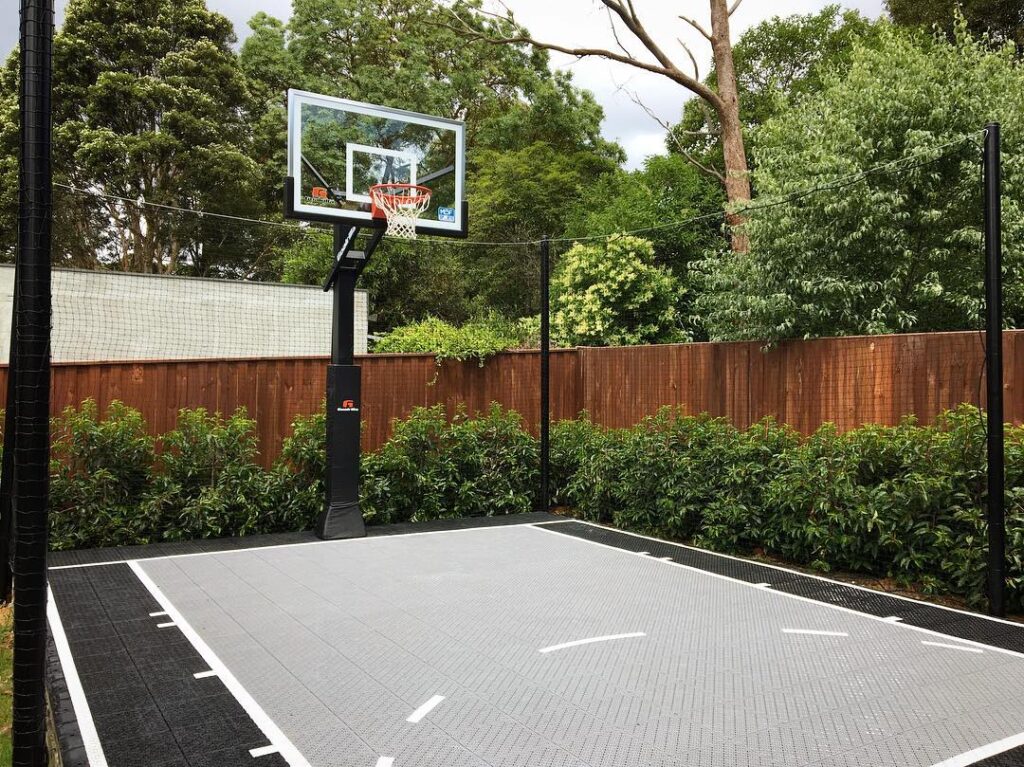A professionally installed sports court is a significant investment for home and business owners to make. So it’s critical that you have everything done correctly to ensure that you’re making a purchase that will last for decades!
Unfortunately, courts get built not up to standard frequently, and purchasers begin to regret their investment. One of the first things that should be taken into consideration is the use of reinforced concrete. A court built with reinforced concrete brings many benefits to help quell the sensation of buyer’s remorse.
So how does reinforced concrete benefit your sport court? Continue reading to learn more about these benefits!

Reduce the Chance of Cracks
If you see a recently constructed sports court full of cracks, it’s probably not using reinforced concrete. Not only will cracks in your court make it look unsightly, but they will also create unsafe playing conditions.
No one wants to see their friends, family, or players get hurt on their court due to sub-par court conditions. Reinforced concrete goes through a process called post-tensioning to reduce the likelihood of cracks due to shrinkage.
How Does Post-Tensioning Work?
Post-tensioning is a method for pre-stressing the concrete by applying tension to stress the concrete as it’s poured before loads are applied. By pre-stressing the reinforced concrete, shrinkage cracking is significantly reduced. If any cracks begin to form in the concrete, they’ll be held together tightly, which will prevent them from spreading.
This works by placing high-strength steel through the concrete and stretching them to their fully-expanded length as the concrete hardens. This way, as time moves on and the court shifts due to natural effects, the reinforced concrete’s steel can move more freely.
Protection from Changing Temperatures
When you live in a town or city that experiences all four seasons of the year, it can take a toll on many different court surfaces. From the hot summer sun to freezing winter temperatures, court surfaces like asphalt are guaranteed to start cracking or develop pits.
With reinforced concrete, you don’t have to worry about your court shifting and cracking with the weather. This court material will flex with the changing temperatures, whether you’re in 100-degree temperatures or freezing snow.
Better Water Drainage
A lot of different court materials will allow water to pool in spots. It can make it challenging to safely play a game of basketball or tennis when you’re trying to avoid a massive pool of water.
Reinforced concrete drains water much more efficiently than other court surfaces. Thanks to a more controlled slope and the reduction of cracks, water will flow from the court and has nowhere to seep in and freeze, which can cause more cracks.
Less Maintenance and a Longer Lifespan
Traditional grass tennis courts require constant maintenance to maintain, and asphalt sports courts don’t hold up well over the years. Many commercial facilities are opting for reinforced concrete courts because they need little maintenance to keep them looking and performing their best, and they’ll last decades before needing work done on them. This reduced maintenance and increased longevity can save a business thousands over the years in maintenance and replacements!
Wrapping Up
Reinforced concrete is one of the smartest choices for any sports court! By reducing the possibility of cracks, protecting your court from shifting temperatures, offering superior water drainage, less maintenance, and a longer lifespan, reinforced concrete rises above the rest. Not many other court surface materials can compete with these benefits. So, if you want a court that will last and save you money, consider reinforced concrete!






